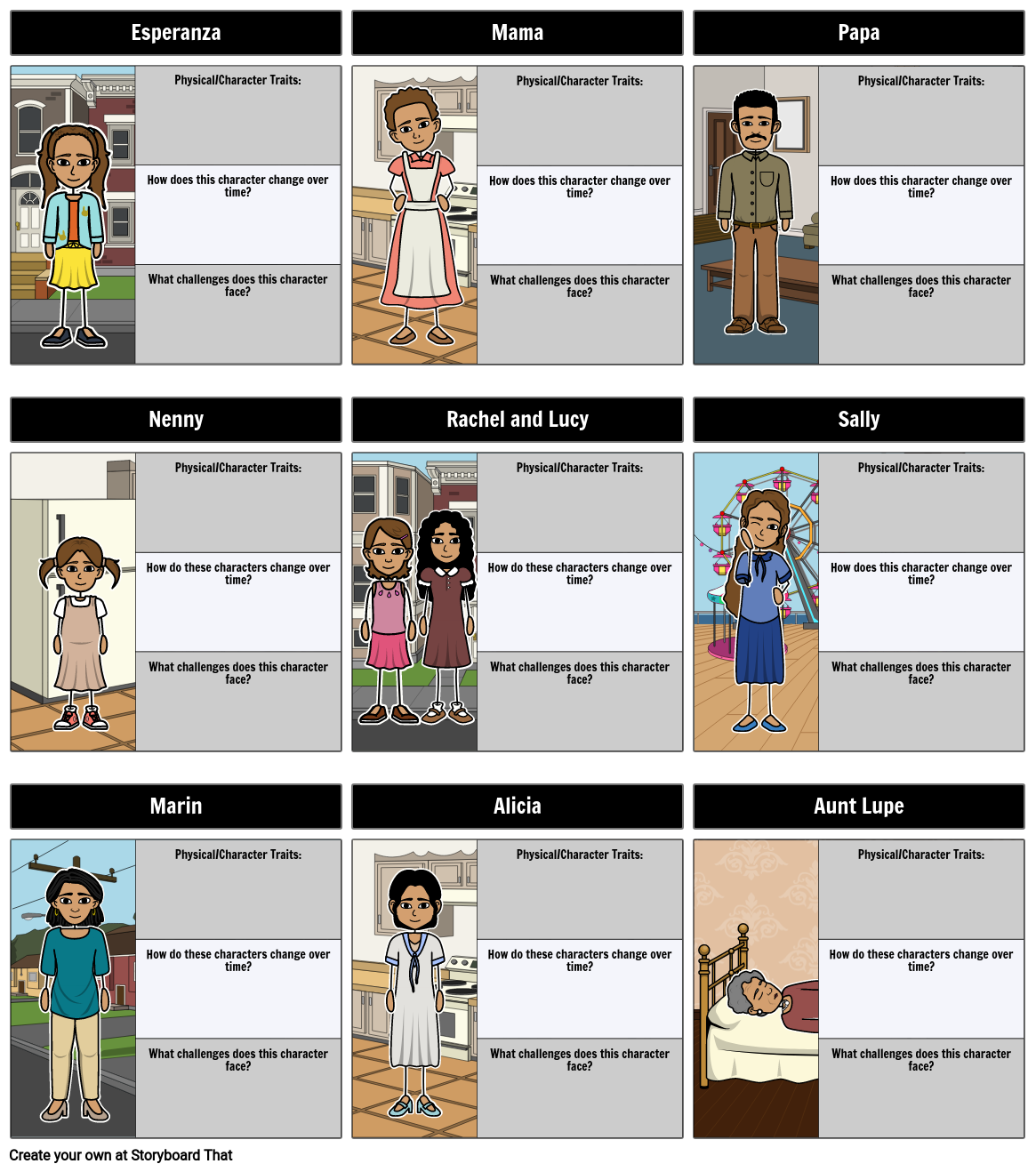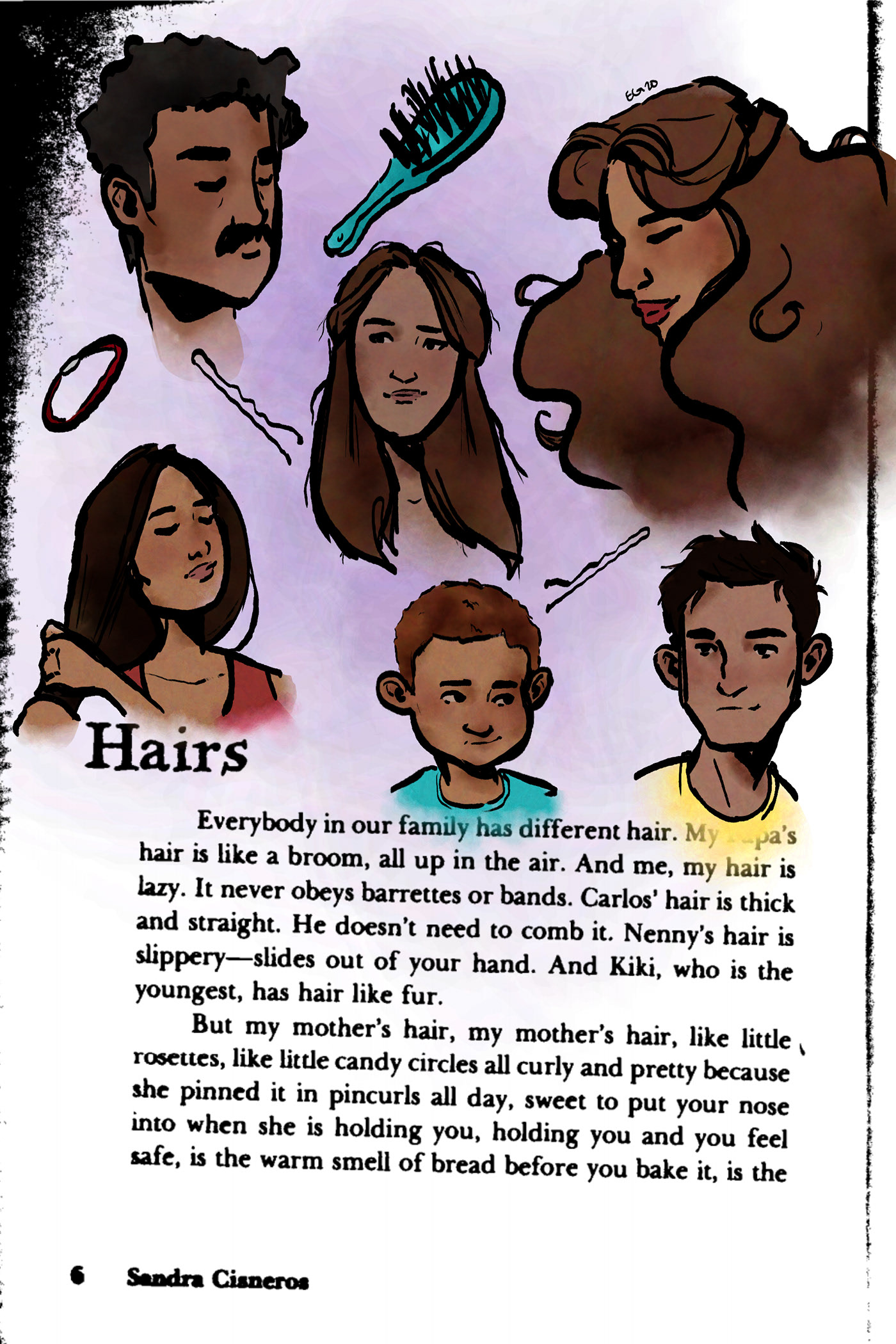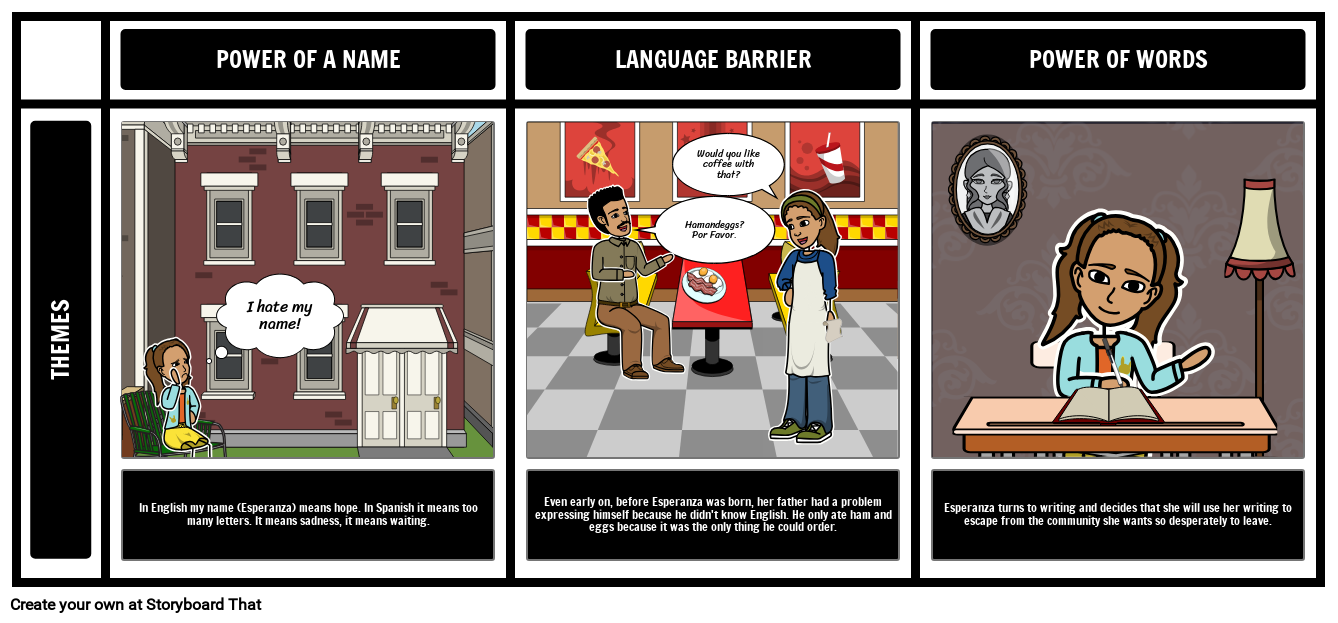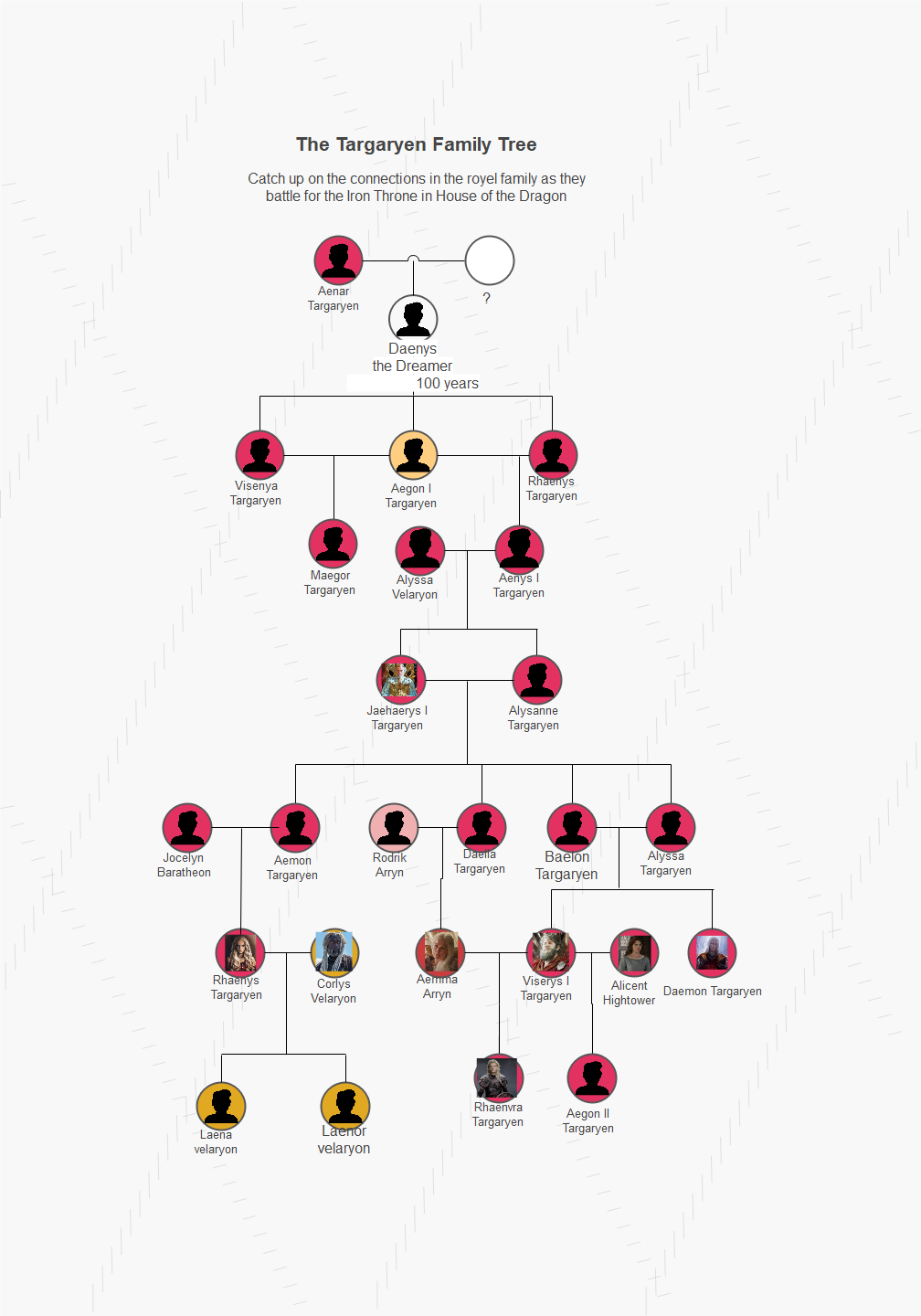Table Of Content

She is fully aware that she does not belong there, everything about it is described in negative terms delineating everything that it isn't versus what it is. It's by knowing where she doesn't fit that she knows to where she might fit.[58] It is similar to the concept of light and dark. We know that darkness is the absence of light, in this case her identity exists outside of this house on mango street. Members will be prompted to log in or create an account to redeem their group membership.
The House on Mango Street Full Book Summary
Meanwhile, during the beginning of the following school year, Esperanza befriends Sally, a girl her age who is more sexually mature than Lucy or Rachel. Esperanza is not completely comfortable with Sally’s sexual experience, and their friendship results in a crisis when Sally leaves Esperanza alone, and a group of boys sexually assaults Esperanza in her absence. After moving to the house, Esperanza quickly befriends Lucy and Rachel, two Chicana girls who live across the street.
By Sandra CisnerosRead by Sandra Cisneros
These three, along with Esperanza’s little sister Nenny, have many small adventures in the first part of the book, including searching through a labyrinthine junk store and learning from an older girl named Marin. While exploring her world, Esperanza experiences the shame of poverty, the unfairness of racism, and the beauty of poetry and music. The struggle for self-definition is a common theme in a coming-of-age novel, or bildungsroman, and in The House on Mango Street, Esperanza’s struggle to define herself underscores her every action and encounter.

More by Sandra Cisneros

She befriends Sally, an attractive girl who wears heavy makeup and provocative clothing, and who is physically abused and forbidden from leaving her home by her strongly religious father. Sally's and Esperanza's friendship is compromised when Sally ditches Esperanza for a boy at a carnival, leaving Esperanza to be sexually assaulted by a group of men. She recounts other instances of assault she has faced, like an older man forcibly kissing her at her first job. Esperanza's traumatic experiences and observations of the women in her neighborhood, many of whom are controlled by the men in their lives, only further cement her desire to leave Mango Street. It is only when she meets Rachel and Lucy's aunts, who tell her fortune, that she realizes her experiences on Mango Street have shaped her identity and will remain with her even if she leaves.
Author Sandra Cisneros receives Holbrooke award for work that helps promote peace and understanding - The Associated Press
Author Sandra Cisneros receives Holbrooke award for work that helps promote peace and understanding.
Posted: Tue, 12 Sep 2023 07:00:00 GMT [source]
Cisneros has written that for some of the stories in The House on Mango Street – like “The Family of Little Feet” – she started with a title and then had to make a story for it, while the first line of “The Three Sisters” came to her in a dream. Created by the original team behind SparkNotes, LitCharts are the world's best literature guides. The novel is composed of 44 interconnected vignettes, of varying lengths, ranging from one or two paragraphs to several pages.
Minerva, who like Esperanza is creative and fond of writing poems and has children and a husband who physically abuses her. The most interesting moment in her life in that house arrives when all the children enjoy riding the Cadillac of Louie’s cousin but he faces immediate arrest by police for the act of stealing. Esperanza’s great-grandmother, also named Esperanza, is the first of many women who are trapped by men, society, and their own sense of defeat. The elder Esperanza was initially a strong woman, but after her forced marriage she spent most of her days sitting by a window. Windows appear frequently in situations similar to the elder Esperanza’s, suggesting that these trapped women do not accept their cages blindly but instead are always aware of the world outside that is off-limits to them. Esperanza demonstrates her own awareness of the larger world when she observes that being born in the year of the horse isn’t necessarily bad luck, but that the Mexicans and Chinese don’t like their women to be strong like horses.
The House on Mango Street is a 1984 novel by Mexican-American author Sandra Cisneros. Structured as a series of vignettes, it tells the story of Esperanza Cordero, a 12-year-old Chicana girl growing up in the Hispanic quarter of Chicago. Based in part on Cisneros's own experience, the novel follows Esperanza over the span of one year in her life, as she enters adolescence and begins to face the realities of life as a young woman in a poor and patriarchal community. Elements of the Mexican-American culture and themes of social class, race, sexuality, identity, and gender are interwoven throughout the novel.
I'm Booked: “The House on Mango Street” - District
I'm Booked: “The House on Mango Street”.
Posted: Fri, 21 Apr 2023 07:00:00 GMT [source]
Parents' Ultimate Guide to YouTube Kids
Everyman’s Library pursues the highest production standards, printing on acid-free paper, with full-cloth cases with two-color foil stamping, decorative endpapers, silk ribbon markers, European-style half-round spines, and a full-color illustrated jacket. Contemporary Classics include an introduction, a select bibliography, and a chronology of the author’s life and times. Esperanza decides she’ll combine sexuality with autonomy by being “beautiful and cruel” like Sally and the women in movies. However, Esperanza finds out that being “beautiful and cruel” is impossible in her male-dominated society when she experiences sexual assault. In her dreams about being with Sire, Esperanza is always in control, but in her encounter with the boys who assault her, she has no power whatsoever. The assault makes Esperanza realize that achieving true independence won’t be possible if she pursues relationships with the men in her neighborhood.
Identity
Along with chronicling Esperanza’s growth, the book’s vignettes also move through brief descriptions of her neighbors. While some of these portraits involve eccentric or memorable men (Meme Ortiz, Geraldo, or Earl), most of them involve women who are trapped in some way. There is Mamacita, who does not leave her apartment because she is afraid of the English language, and Rafaela, whose husband keeps her locked up because she is beautiful. Alicia must stay up all night studying so she can graduate from college and get a good job someday, but her father makes her wake up early to make tortillas and do the chores. Rosa Vargas is imprisoned by the impossible task of taking care of her many unruly children. There is also Minerva, who writes poems like Esperanza, but is already married with two children and a husband who beats her.
It means sadness, it means waiting.”Told in a series of vignettes—sometimes heartbreaking, sometimes joyous—Cisneros’s masterpiece is a classic story of childhood and self-discovery and one of the greatest neighborhood novels of all time. Like Sinclair Lewis’s Main Street or Toni Morrison’s Sula, it makes a world through people and their voices, and it does so in language that is poetic and direct. This gorgeous coming-of-age novel is a celebration of the power of telling one’s story and of being proud of where you’re from.
Esperanza tells her own story through vignettes, each of which reveals a bit more of who she is and who she wants to be. She observes the people around her and reflects on her experiences, but she does not connect them in a way that suggests she understands their greater meaning in her life. She is too young, and too involved, to narrate objectively, and we must piece together her stories. Esperanza matures throughout the novel, and by the end she has gained a clearer sense of who she is.
Esperanza does not have any privacy, and she resolves that she will someday leave Mango Street and have a house all her own. The first few sections of The House on Mango Street suggest that Esperanza will focus on the importance and experiences of her family, but this focus eventually expands. Esperanza’s family and house fill these first few sections, so specifically that Esperanza even discusses the security she finds in the smell of her mother’s hair. However, the introduction of the family is only an introduction to what will become Esperanza’s larger family, the barrio. She may find comfort in her mother’s hair, but Esperanza does not actually mention her mother again for another thirty-five sections.
Esperanza must define herself both as a woman and as an artist, and her perception of her identity changes over the course of the novel. In the beginning of the novel Esperanza wants to change her name so that she can define herself on her own terms, instead of accepting a name that expresses her family heritage. She wants to separate herself from her parents and her younger sister in order to create her own life, and changing her name seems to her an important step in that direction. Later, after she becomes more sexually aware, Esperanza would like to be “beautiful and cruel” so men will like her but not hurt her, and she pursues that goal by becoming friends with Sally. After she is assaulted, she doesn’t want to define herself as “beautiful and cruel” anymore, and she is, once again, unsure of who she is. She sees that patriarchy is prominent in the current neighborhood, where she feels suffocated.
Lucy, Rachel, Esperanza, and Esperanza’s little sister, Nenny, have many adventures in the small space of their neighborhood. They buy a bike, learn exciting stories about boys from a young woman named Marin, explore a junk shop, and have intimate conversations while playing Double Dutch (jumping rope). The girls are on the brink of puberty and sometimes find themselves sexually vulnerable, such as when they walk around their neighborhood in high-heeled shoes or when Esperanza is kissed by an older man at her first job. During the first half of the year, the girls are content to live and play in their child’s world.
When she attends a funeral where the three sisters see her and predict that she’s going to leave mango street. However, her meeting with Lucy and Rachel and their outgoing aunt shows that she has identified herself with Mango Street. As of now, she decides to resort to poetry to escape the situation emotionally but later escape physically too. The novel ends when Esperanza vows to help the residents of Mango Street, for they are very much with her in her memories. As time passes, Esperanza starts becoming mature not only physically but also sexually. She shapes her mindset to become women who do not surrender to a man’s dominance, yet showcases her ability to be an attractive woman to men.










